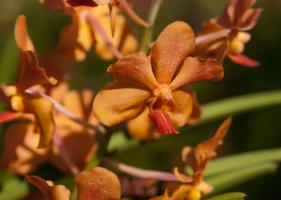When to Plant Apple Trees in Zone 6
Zone 6 includes states such as Pennsylvania, Ohio, Indiana, and Illinois. When it comes to planting apple trees in this region, there are a few key factors to consider. In general, planting apple trees in zone 6 should be done in the spring or fall, but there are some important nuances to keep in mind.
Spring Planting
Spring is one of the most popular times to plant apple trees in zone 6. Typically, spring planting should be done around mid-April when the ground has thawed and there is no longer a risk of frost. Planting apple trees during this time allows them to take advantage of the warmer weather and longer days to establish strong roots before the summer heat sets in.
Before planting, make sure to prepare the soil by tilling it and adding any necessary fertilizers or amendments. Also, choose a planting location with plenty of sunlight and well-draining soil. When planting, make sure to dig a hole deep enough to accommodate the entire root system, and backfill it with soil to ensure that the tree stays upright.
Fall Planting
Fall planting is another good option for planting apple trees in zone 6. Typically, fall planting should be done in late September or early October, after the heat of summer has passed but before the ground freezes. Planting apple trees during this time allows them to take advantage of the cooler weather and ample rainfall to establish strong root systems before going dormant in the winter.
When planting in the fall, it’s important to make sure that the soil is still warm enough to encourage root growth. If the ground is too cold, the tree may not establish strong roots before going dormant. Additionally, make sure to mulch around the base of the tree to insulate the roots and protect them from harsh winter weather.
Other Factors to Consider
When planting apple trees in zone 6, there are a few other factors to consider to ensure that they thrive. One of the most important is choosing the right apple variety. In general, apples that are well-suited to zone 6 include Gala, Granny Smith, Honeycrisp, and Braeburn.
Additionally, it’s important to make sure that the apple trees have adequate pollination. Most apple trees require cross-pollination with another variety to produce fruit, so it’s important to make sure that there are other apple trees nearby that bloom around the same time.
Finally, it’s important to regularly prune and care for apple trees to ensure that they remain healthy and productive. This includes removing any dead or diseased branches, fertilizing the trees regularly, and protecting them from pests and disease.
Conclusion
Planting apple trees in zone 6 can be a rewarding experience, but it’s important to choose the right time and location and to take proper care of the trees. By following these tips, you can enjoy delicious apples for years to come!

 how many times do yo...
how many times do yo... how many planted tre...
how many planted tre... how many pine trees ...
how many pine trees ... how many pecan trees...
how many pecan trees... how many plants comp...
how many plants comp... how many plants can ...
how many plants can ... how many plants and ...
how many plants and ... how many pepper plan...
how many pepper plan...































